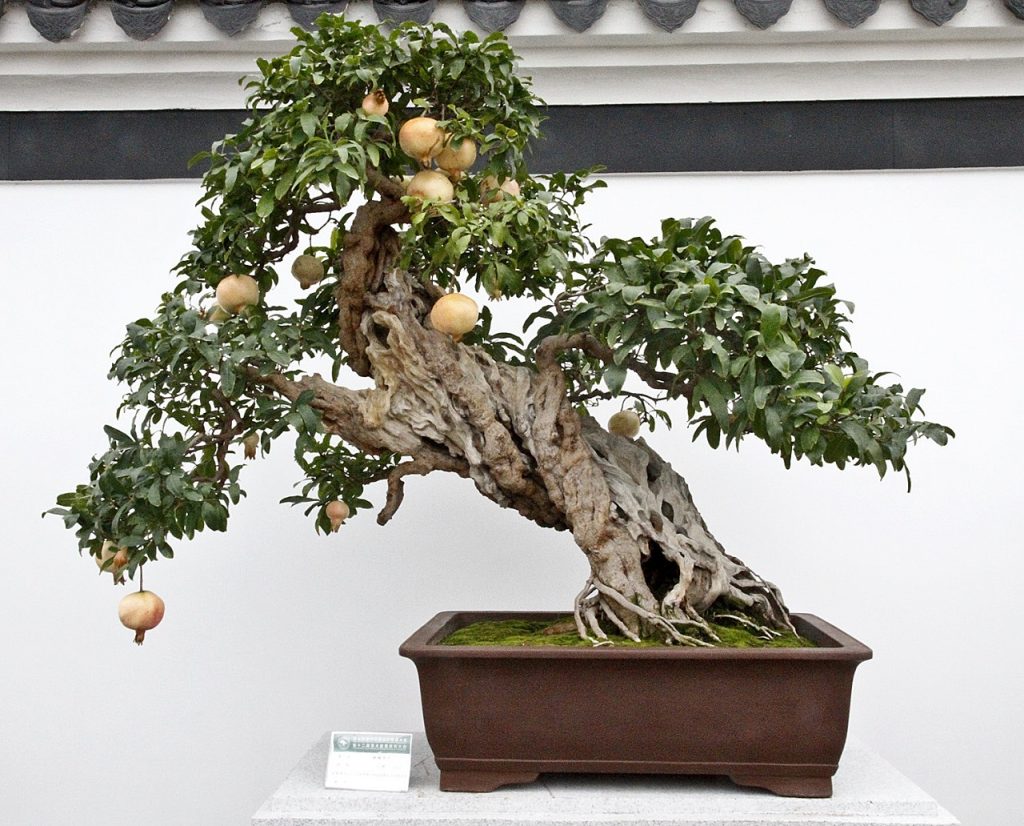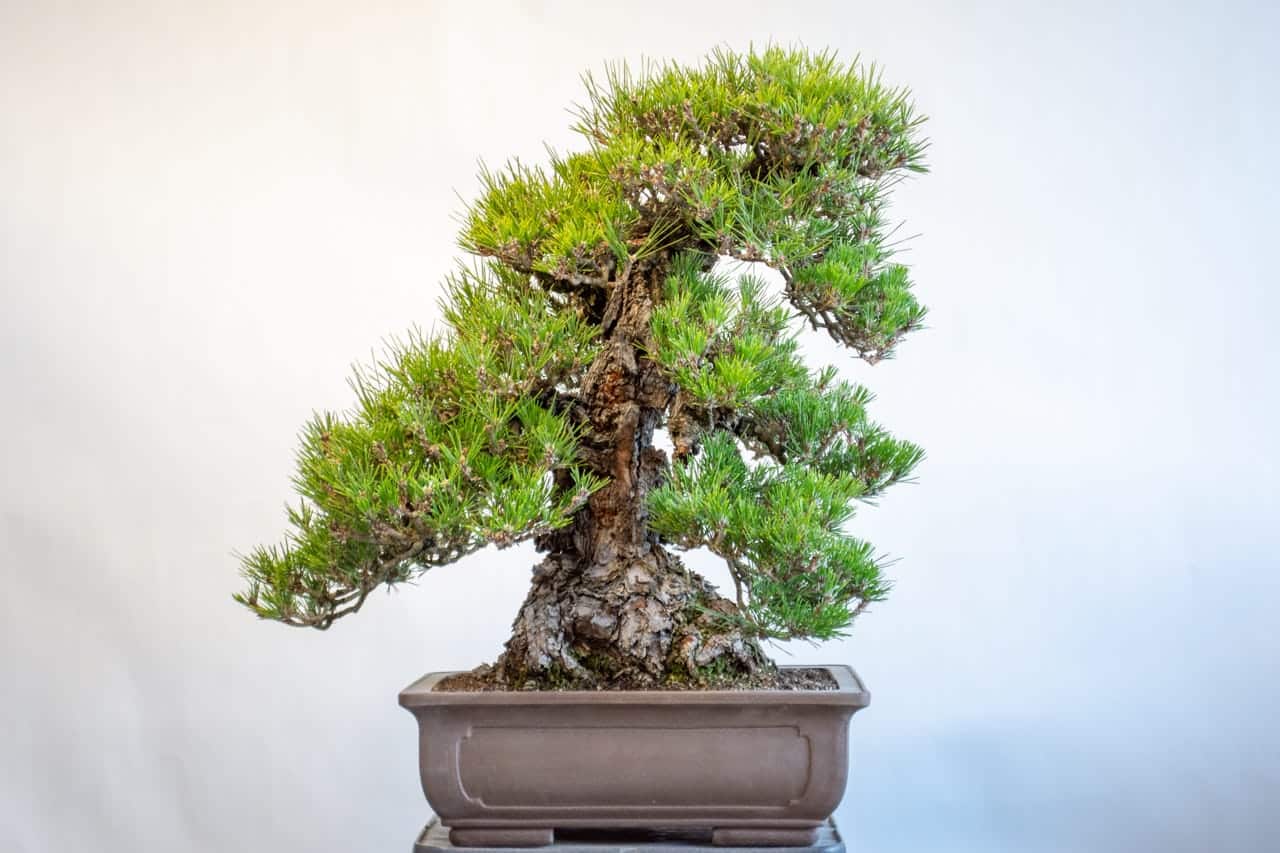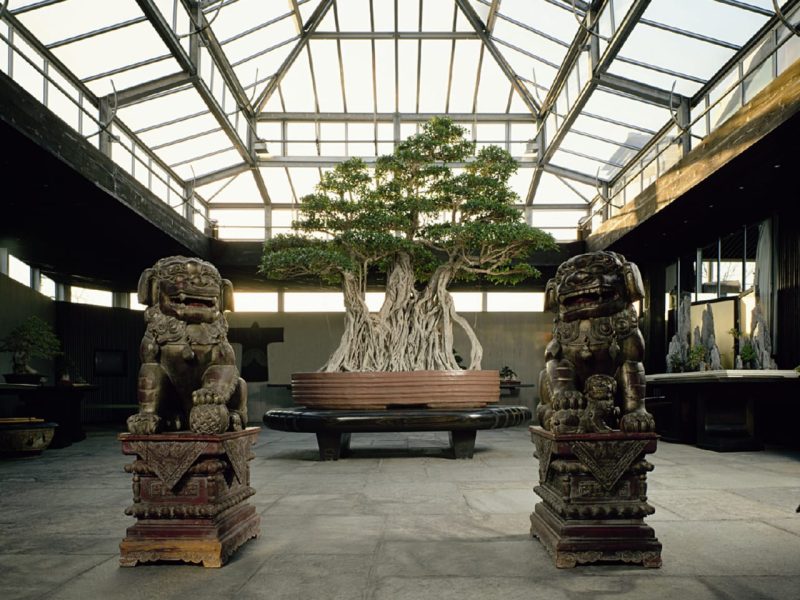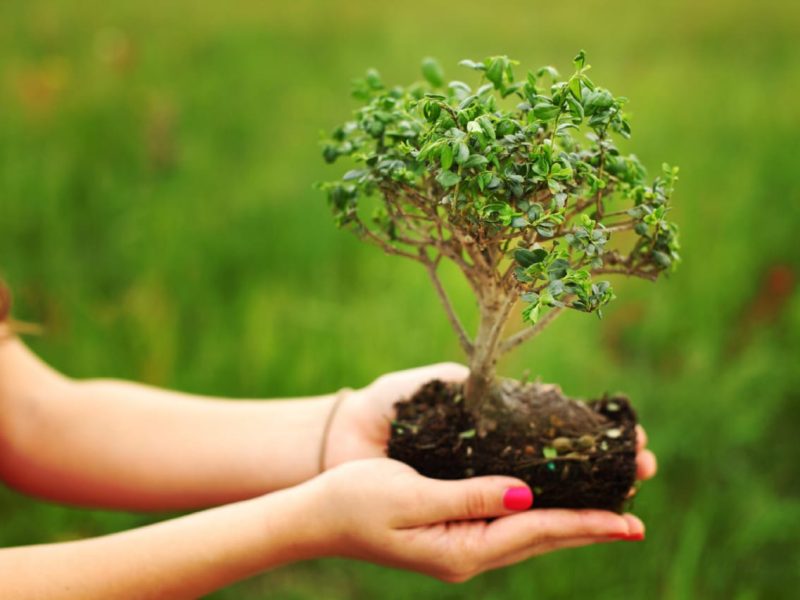Few bonsai lovers are willing to wait years or even decades for their favorite plant grown from seed to take on the characteristics of an old tree. Patience is a necessary quality for a gardener, but if desired, it is possible to try certain techniques to reduce the time it takes to achieve the desired result.
Depending on the growing conditions and the selected breed for this purpose can be applied:
- intensive agronomic techniques,
- splicing of several plants with resistant stems,
- grafting of cuttings on a thick old trunk.

Intensive agronomy
This is the set of measures for the care of the plant, providing the most favorable environmental conditions for the development of shoots and root system, deficiency-free ratio of elements of mineral nutrition, water and light. At the same time plants are fertilized during vegetation with liquid manure, prolongation of the favorable period by illumination.
With the help of intensive agrotechnics you can not only make the plant form more powerful growth and leaf apparatus, providing thickening of the trunk and side branches, but also bring it out of its natural resting state, provoke the appearance of additional waves of growth. Due to this, a tree can form several biological cycles during one vegetation season, corresponding to several years of life. Additional growth waves form several annual rings in the wood structure, reflecting the age of a tree.
Growth acceleration and correspondingly more intensive increase of size can be caused not only in plants with weak seasonal development (which is usually observed in many tropical and subtropical species with open buds), but also in species with pronounced seasonal development (their growth value during vegetation period is usually caused by the number of leaf buds of wintering closed buds, which were formed in conditions of the previous year).
In practice of fruit nurseries due to good agrotechnics and additional fertilizing with liquid manure, seedlings leave dormancy condition that should come to them after development of 6-7 rudiments of leaves contained in seed bud and get powerful buds during one season of vegetation. Seedlings differ in the intensity of growth and respond differently to environmental conditions. Therefore, excess seeds and seedlings should be purchased first to select the most active individuals later.
Additional branching of shoots in mature healthy plants that have gone into dormancy can be induced by pruning and removing all leaves.
Some tree species greatly accelerate their growth when planted in a larger container or in the ground. In this case, the root system formed in a container will allow in the future, when the tree reaches the desired size, to transplant it almost painlessly into any size container, even after cutting most of the root system.
A more radical and quick way to get a thick trunk is to splice several plants together
This method is often used to thicken the trunk when growing Benjamin and Retusa indoor ficuses. To carry out this operation, plants are previously planted in one container and grown to the desired parameters. Mating can only take place when the trunks are pressed tightly to each other. This can be achieved by braiding the plants or by twisting them in a spiral.
Fusion first takes place in the places where they touch, and then as they thicken, a common trunk with scars and bark folds is formed. The trunk can be given curves by pulling one of the trunks in the right places during weaving. Weaving can be done by placing a stone or thick, curved branch between the plants. This creates a “bare roots on stone” style bonsai, with the base of the trunks braiding around the stone acting as bare roots. Braiding the branch allows you to significantly increase the thickness of the resulting total trunk.
Apart from ficuses, other tree species with elastic wood and thick bark are also easy to weave and join together. These include many species of pine and gingko. The splicing technique is particularly effective for these species using stones.
Stem splicing eliminates the disadvantages of old thick plants which have lost their lower branches. In addition, the old bare trunk can be used as the basis for splicing several young plants from which the crown is formed. And the old trunk is subsequently cut off.
If the trunks do not bend well, they can be spliced together by pressing one against the other, having previously cut off a strip of bark with a small layer of wood along the touch lines. The cuts are caulked with garden varnish and the trunks are wrapped tightly with elastic foam.
For species with high wound meristem activity, branches cut from trees of the same species can be used instead of plants with roots. Bark is cut off on one side of the branch, and a longitudinal incision is made on the thickened trunk and the bark is separated. A branch prepared to the size of the cut is inserted under it and sealed with foil. Side branches can be left on the spliced branch to form the crown afterwards. This variant of splicing can be considered as one of the methods of grafting, which are described below.
Grafting cuttings on a thick perennial trunk is the fastest and most effective method of obtaining a good tree to form bonsai
Some species (apple, plum, cherry) in bonsai culture are represented only by grafted forms. For these purposes, they take forms or varieties that have valuable features – small size of crown elements, brightly colored flowers. In particular, weeping and umbrella varieties of ornamental apple trees are very attractive in this respect, because the need to monitor the height of the plant, constantly shortening powerful vertical shoots, which usually appear on other varieties of apple trees, is eliminated.
The use of thick rootstock is especially effective if dwarf-shaped, slow-growing forms of plants, which are present in many both deciduous and coniferous tree species, are taken as scions.
When selecting rootstock, you should prefer plants with a sufficient number of low-lying side branches needed to create a crown. With such branches, technically correct grafting and good care, an almost complete bonsai tree can be obtained even in one season of vegetation.
If there are no side branches at the right height on the scion, it is prepared for grafting in the first year.
To do this, cut off the top at the desired height and regulate the development of side shoots appearing on the trunk. The next year, the cuttings are grafted on the side shoots that emerged. With a good command of different methods of grafting, the operation can be carried out in one year, using thick shortened branches.
It is better to graft in spring, at the end of April or beginning of May. If the rootstock is kept in the open ground, the grafting should be protected from the sun with a cap of thick paper. The condition of the grafts should be checked periodically. When leaves appear on grafts, the paper cover is removed, shoots appearing on the rootstock are cut off, and the film wrapping the grafting places is rewound to eliminate overstretching of thickening cuttings. The film is removed completely when there is no danger of the cuttings being broken by the wind. The growths that appear on the cuttings can be shortened, which will cause additional branching of the shoots.
When using accelerated methods of bonsai formation, there are difficulties in ascertaining the age of the resulting individual, since its constituent parts differ in life span and physiological condition. It is difficult to decide the age of a plant if its scion has been growing from seed for twenty years, and the cuttings for grafting are taken from a centenarian plant. Due to the fact that in bonsai culture the equality of astronomical and biological age of an individual is often violated (a plant can go through several biological cycles corresponding to years of life during one vegetation season), it is more legitimate to use the idea of an illusory age, which is established subjectively by external signs. The described techniques allow to quickly get illusorily old plants, although according to physiological indices due to the bonsai technology they remain young forever and their lifespan in this connection can be unlimited.



